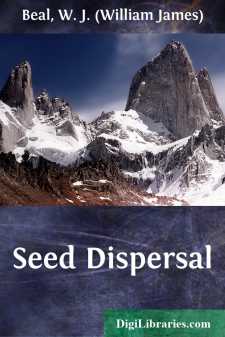Categories
- Antiques & Collectibles 13
- Architecture 36
- Art 48
- Bibles 22
- Biography & Autobiography 813
- Body, Mind & Spirit 142
- Business & Economics 28
- Children's Books 17
- Children's Fiction 14
- Computers 4
- Cooking 94
- Crafts & Hobbies 4
- Drama 346
- Education 46
- Family & Relationships 57
- Fiction 11829
- Games 19
- Gardening 17
- Health & Fitness 34
- History 1377
- House & Home 1
- Humor 147
- Juvenile Fiction 1873
- Juvenile Nonfiction 202
- Language Arts & Disciplines 88
- Law 16
- Literary Collections 686
- Literary Criticism 179
- Mathematics 13
- Medical 41
- Music 40
- Nature 179
- Non-Classifiable 1768
- Performing Arts 7
- Periodicals 1453
- Philosophy 64
- Photography 2
- Poetry 896
- Political Science 203
- Psychology 42
- Reference 154
- Religion 513
- Science 126
- Self-Help 84
- Social Science 81
- Sports & Recreation 34
- Study Aids 3
- Technology & Engineering 59
- Transportation 23
- Travel 463
- True Crime 29
W. J. (William James) Beal
William James Beal (1833–1924) was an American botanist and educator known for his pioneering work in agricultural science and botany. He is best remembered for initiating one of the longest-running seed viability experiments, which is still ongoing today. Beal also wrote several influential books, including "The New Botany" and "Grasses of North America," which contributed to advances in botany and plant breeding. As a professor at Michigan Agricultural College (now Michigan State University), he played a key role in shaping agricultural education in the United States.
Author's Books:
Sort by:
The designer of this bulletin first had in mind something of the sort for the use of his students, not only the undergraduates, but others living on farms, or teaching in Michigan and elsewhere. Whoever grows seeds to sell, or buys seeds to sow, should be benefited by consulting the illustrations which are unsurpassed for accuracy by anything in this country. They were all made by Mr. F. H. Hillman. A...
more...
CHAPTER I.HOW ANIMALS GET ABOUT. 1. Most of the larger animals move about freely.—When danger threatens, the rabbit bounds away in long jumps, seeking protection in a hollow tree, a log, or a hole in the ground. When food becomes scarce, squirrels quickly shift to new regions. Coons, bears, skunks, and porcupines move from one neighborhood to another. When the thickets disappear and hunters abound,...
more...



